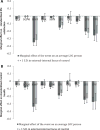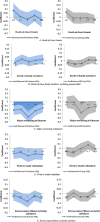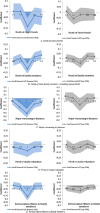Can having internal locus of control insure against negative shocks? Psychological evidence from panel data
- PMID: 28713185
- PMCID: PMC5510663
- DOI: 10.1016/j.jebo.2015.11.014
Can having internal locus of control insure against negative shocks? Psychological evidence from panel data
Abstract
We investigate whether the intensity of emotional pain following a negative shock is different across the distribution of a person's locus of control - the extent to which individuals believe that their actions can influence future outcomes. Using panel data from Australia, we show that individuals with strong internal locus of control are psychologically insured against own and others' serious illness or injury, close family member detained in jail, becoming a victim of property crime and death of a close friend, but not against the majority of other life events. The buffering effects vary across gender. Our findings thus add to the existing literature on the benefits of internal locus of control.
Keywords: HILDA; Happiness; Locus of control; Resilience; Well-being.
Figures






References
-
- Abramson LY, Seligman ME, Teasdale JD. Learned helplessness in humans: critique and reformulation. J Abnorm Psychol. 1978;87:49–74. - PubMed
-
- Andrisani P. Internal–external attitudes, personal initiative, and the labor market experience of white and black men. J Hum Resour. 1977;12(3):308–328.
-
- Barrick MR, Mount MK. The big five personality dimensions and job performance: a meta-analysis. Pers Psychol. 1991;44:1–26.
-
- Benson LT, Deeter TE. Moderators of the relation between stress and depression in adolescents. School Counselor. 1992;39:189–194.
-
- Bonanno GA. Loss, trauma, and human resilience: have we underestimated the human capacity to thrive after extremely aversive events? Am Psychol. 2004;59(1):20–28. - PubMed
Grants and funding
LinkOut - more resources
Full Text Sources
Other Literature Sources
